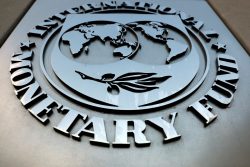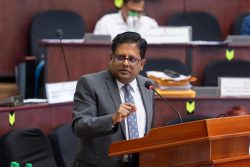– after company was seeking to expand
Head of the Guyana Office for Investment (Go-Invest) Geoffrey Da Silva said it was government that approached the principals of New GPC to invest in the Sanata Textiles complex after the company expressed its intention to expand operations and engage in new enterprises.
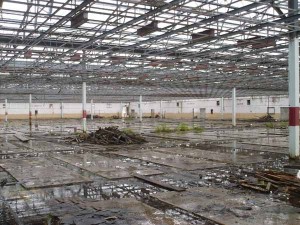 A 99-year lease was granted to Queens Atlantic Invest-ment Inc (QAII) for the development of printing, dying and textile operations at the Sanata complex.
A 99-year lease was granted to Queens Atlantic Invest-ment Inc (QAII) for the development of printing, dying and textile operations at the Sanata complex.
Speaking to this newspaper on Wednesday, Da Silva explained that the government went to tender for the lease of the printing and dying facilities and the land on which they were but there were no takers. He said the government knew the New GPC wanted to expand beyond its Farm, East Bank Demerara premises, since that company was willing to explore new projects that could not be done at the current location. He said the Eccles Industrial Site did not afford sufficient space for the planned expansion.
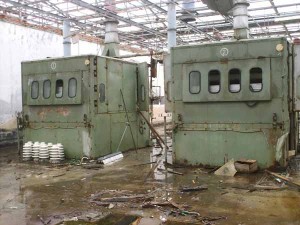 “We put it to them that they could look at Sanata,” Da Silva said. However, he said that the overgrown condition of the complex and the asbestos presence were not encouraging to the investors. “They said that they will invest US$25 million – US$30 million [but cost to get rid of asbestos will be significant],” he said.
“We put it to them that they could look at Sanata,” Da Silva said. However, he said that the overgrown condition of the complex and the asbestos presence were not encouraging to the investors. “They said that they will invest US$25 million – US$30 million [but cost to get rid of asbestos will be significant],” he said.
He said that at that time, QAII drew up a proposal of five different projects and the government was heartened that the investor was willing to take on the asbestos removal, saving the government millions.
He explained that government was trying to avoid a situation where persons sent low tenders for warehouse use of the property. He said government has retained ownership of the facility.
The government maintains that the selection of New GPC’s proposal for the lease of Sanata’s lands and equipment was done in a transparent manner.
The Privatisation Board had recommended to Cabinet that the company be granted a 99-year lease with the government for the use of the Industrial Site facility. QAII is the parent company of the New GPC Inc.
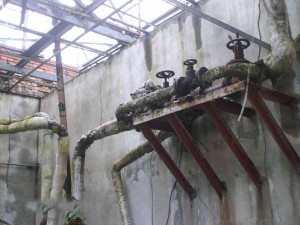 According to the Privatisa-tion Policy Framework White Paper, in the event that all bids received are declared unacceptable because of (a) non-compliance to prescribed legal, technical and financial requirements as indicated in the bidding rules or (b) bids received are lower than the fixed floor price, the government may choose to conduct the disposition of its interest through negotiation.
According to the Privatisa-tion Policy Framework White Paper, in the event that all bids received are declared unacceptable because of (a) non-compliance to prescribed legal, technical and financial requirements as indicated in the bidding rules or (b) bids received are lower than the fixed floor price, the government may choose to conduct the disposition of its interest through negotiation.
“Accordingly, the government will appoint a special ad-hoc committee to conduct the negotiations with interested parties on a one-on-one basis, or as a group. The negotiation will be undertaken with a view to ensuring that government obtains the best price, which should not be lower than the highest bid submitted at the failed bidding,” the document said.
The White Paper said adequate publicity and notification, so as to attract the greatest number of interested parties, must be given. Further, there must be sufficient time between the publication and the time of bidding.
Head of the Privatisation Unit/NICIL, Winston Brassington, had told this newspaper that the advertisement for the facility was published numerous times and had been extended.
A statement from QAII yesterday said that following preliminary discussions, the company was requested to submit a plan, which set out in great detail its proposal for several manufacturing activities. “It is pertinent to emphasize at this stage that the property was overgrown with bushes, fences were broken down, roads were potholed and drainage facilities were non functional. The buildings were in disrepair and the machinery and other installations were heavily vandalized,” the statement said.
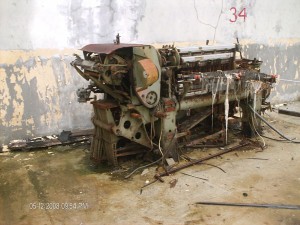 The company said that there was ample evidence that some sections of the compound were abandoned long before 2005. “There was also a significant accumulation of garbage and other waste material generated from rental activities not related to textile production and also due to neglect. Although the compound was in such sad state of affairs the widespread presence of asbestos in the form of roofing, insulation, ceilings and floorings would have been one of the major deterrents to any interested party,” the statement said.
The company said that there was ample evidence that some sections of the compound were abandoned long before 2005. “There was also a significant accumulation of garbage and other waste material generated from rental activities not related to textile production and also due to neglect. Although the compound was in such sad state of affairs the widespread presence of asbestos in the form of roofing, insulation, ceilings and floorings would have been one of the major deterrents to any interested party,” the statement said.
The company said that by the time the asbestos removal is finally completed QAII would have spent over $400 million. “Looking back perhaps it would have been a lot easier and even less expensive to construct new buildings,” the statement.
Chairman of New GPC, Dr Ranjisinghi Ramroop, gave this newspaper a tour of the facilities yesterday and pointed out the decrepit machinery the government had tendered out for use. Hitting back at statements made in the Kaieteur News, Ramroop said the machines were so worthless even scrap metal operators did not want them. “The unjustified negative comments would not deter us from our objective. Our plans are to make a profit over time on our substantial investment and in the process all would benefit – shareholders, our employees, government and society as a whole. It will be a challenge to us, but we will move on with great determination,” QAII said.
Speaking at a press conference last week Saturday, President Bharrat Jagdeo said the Privatisation Unit had gone ahead with recommending that the property and equipment be leased to QAII.
“There was a public tender from what I gathered, for the facility. If you have one look at the facility you would see the state that the buildings are in, abandoned…so the Privatisation Unit went ahead, recommending. I gather it is $50 million per annum government is getting,” the President said,
The principals envisage an overall investment of US$30 million and the creation of 1,200 jobs of which 600 new permanent jobs would become a reality by the end of 2008. Rehabilitation and construction of the facilities, which commenced in June 2007, are being phased over a three-year period.
Responding to critics on the lease terms, Brassington said that the amount payable was denominated in US dollars and currently set at US$0.24 per square foot and this was adjusted upwards periodically based on the rate of inflation measured by the US consumer price index (CPI).
Brassington explained that if the rate were paid in Guyana dollars, it would be paid at the exchange rate at the time of payment. “So we are protected against both rate changes of the Guyana dollar (depreciation) and US inflation changes. Further, the lease rate for the Eccles Industrial Site is $1/square foot. So we have a situation where our lease rate is 50 times more at Sanata versus Eccles,” Brassington explained.
The President explained that government “always has claw back provisions in place and this is also the case in the Sanata deal.
“We have a few others we are working on. We always have claw back provisions if things don’t go well, if the investments don’t take place. This is always a standard thing. We don’t have anything to hide,” said Jagdeo.
He lashed out at the PNCR’s Winston Murray – one person who was vocal on the deal – saying that Murray doesn’t want him to speak much on who got shares after the privatisation of some state-owned properties.
A few days ago, Murray, in an interview with this newspaper, said the government should make public the full details of the agreement and it should have had the approval of Parliament.






